Encuesta de diagnóstico de diversidad estudiantil en la Facultad de Derecho
Main Article Content
Abstract
Digital surveys are a valuable tool for collecting information that contributes to the design of institutional
policies aimed at addressing the needs of the university community. When collecting sensitive information,
it is essential that survey implementation guarantees the security, privacy, and safety of the data. Therefore,
LimeSurvey was chosen, an open-source software tool that allowed data to be stored on university infrastructure,
roles to be configured, and access codes to be generated for students. Graphical adjustments and text string
modifications were also made to customize the survey according to the specific needs of the project. The pilot
application served to verify the availability of the service, while the final deployment achieved the necessary
number of responses thanks to its digital format, demonstrating its efficiency in data collection. The results
demonstrate the viability of LimeSurvey for academic projects, with advantages such as maintaining data
ownership and its adaptability to specific requirements.
Downloads
Article Details

This work is licensed under a Creative Commons Attribution-NonCommercial-NoDerivatives 4.0 International License.
Este trabajo tiene la licencia CC BY-NC-ND 4.0
References
Alarcón González, F. J., & García Hípola, G. (2018). Entrevistas Online. La encuesta a través de Internet: obstáculos, beneficios, y lecciones aprendidas. 14. https://hdl.handle.net/10481/101546
Albrecht, M. R., Backendal, M., Daniele Coppola, D. (2024). Share with Care: Breaking E2EE in Nextcloud. Infosec Applied Crypto and Education, Departement Informatik. Eidgenössische Technische Hochschule Zürich (ETH Zurich), Switzerland https://eprint.iacr.org/2024/546 DOI: https://doi.org/10.1109/EuroSP60621.2024.00051
Arroyo Menéndez, M., & Finkel, L. (2019). Encuestas por Internet y nuevos procedimientos muestrales. Panorama Social, (30), 41-53. https://www.funcas.es/wp-content/uploads/Migracion/Articulos/FUNCAS_PS/030art04.pdf
Axelos Limited. (2019). ITIL 4 Foundation Revision Guide. Stationery Office.
Cea D’Ancona, M.ª. Á. (2022). Calidad, confianza y participación en encuestas. PAPERS, 107(4), 27. https://doi.org/10.5565/rev/papers.3074 DOI: https://doi.org/10.5565/rev/papers.3074
i Hernàndez, J. M. (2019). Software libre: técnicamente viable, económicamente sostenible y socialmente justo (1st ed.). España: Infonomia.
Kaiser, A. K. (2021). Become ITIL® 4 Foundation Certified in 7 Days: Understand and Prepare for the ITIL Foundation Exam with Real-life Examples. Apress. DOI: https://doi.org/10.1007/978-1-4842-6361-7
LimeSurvey. (2025). Anonymized responses. Participant Settings. LimeSurvey Manual. https://www.limesurvey.org/manual/Participant_settings#Anonymized_responses
LimeSurvey. (2024). Instalación - LimeSurvey CE. LimeSurvey Manual. https://www.limesurvey.org/manual/Installation_-_LimeSurvey_CE/es
LimeSurvey. (2023). LimeSurvey PRO y LimeSurvey CE. LimeSurvey. https://www.limesurvey.org/manual/manual/LimeSurvey_PRO_vs_LimeSurvey_CE/es
Moodle.org. (2023). Moodle 4.1 Requirements. Moodle Releases. https://moodledev.io/general/releases/4.1
Nextcloud. (2025). Security and authentication. https://nextcloud.com/secure/
Niehage, K. (2020). Cryptographic Vulnerabilities and Other Shortcomings of the Nextcloud Server Side Encryption as implemented by the Default Encryption Module. Cryptology ePrint Archive. 1439. https://eprint.iacr.org/2020/1439.pdf
Palacios-Osma, J. I., Rodríguez-Guzmán, J. L., & García-Ramírez, C. X. (2017). Modelo de gestión de servicios ITIL para E-learning. Educación en Ingeniería, 12(23), 28-34. 10.26507/rei.v12n23.684 DOI: https://doi.org/10.26507/rei.v12n23.684
Ramírez Bedolla, A. M., & Zúñiga González, M. (2024). Experiences of application of digital skills diagnostic in UNAM's schools. EDULEARN24 Proceedings, 6717-6722. https://library.iated.org/view/RAMIREZBEDOLLA2024EXP DOI: https://doi.org/10.21125/edulearn.2024.1592
Red TIC UNAM. (2024). III. Marco legal o normativo. Recomendaciones para el almacenamiento de información. https://www.red-tic.unam.mx/recomendaciones-almacenamiento#iii-marco-legal-o-normativo
Regmi, P. R., Waithaka, E., Paudyal, A., Simkhada, P., & van Teijlingen, E. (2016). Guía para el diseño y aplicación de encuestas de cuestionario en línea. PubMed Central, 4(6). https://pmc.ncbi.nlm.nih.gov/articles/PMC5506389/ DOI: https://doi.org/10.3126/nje.v6i4.17258
Valenzuela Urra, C., Reyes Lillo, D., & Oliveros Castro, S. (2018). Introducción: Software libre y código abierto: experiencias innovadoras en bibliotecas y centros de información. Palabra Clave, 8(1), 2. https://doi.org/10.24215/18539912e054 DOI: https://doi.org/10.24215/18539912e054
Zúñiga Arguedas, E. (2022). Modelo de gestión organizacional basado en ITIL 4 - Prácticas de Servicios y su aporte a los sistemas de información para toma de decisiones. InterSedes, 23(48), 21. https://doi.org/10.15517/isucr.v23i48.50034 DOI: https://doi.org/10.15517/isucr.v23i48.50034



